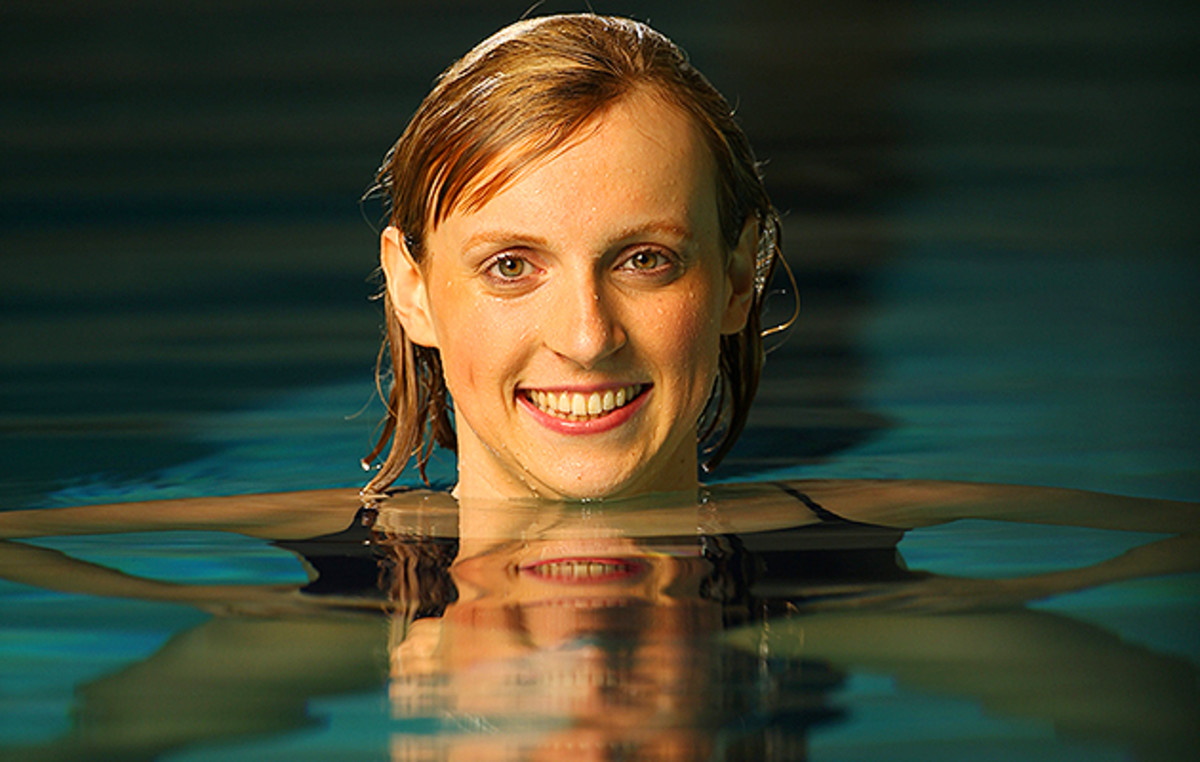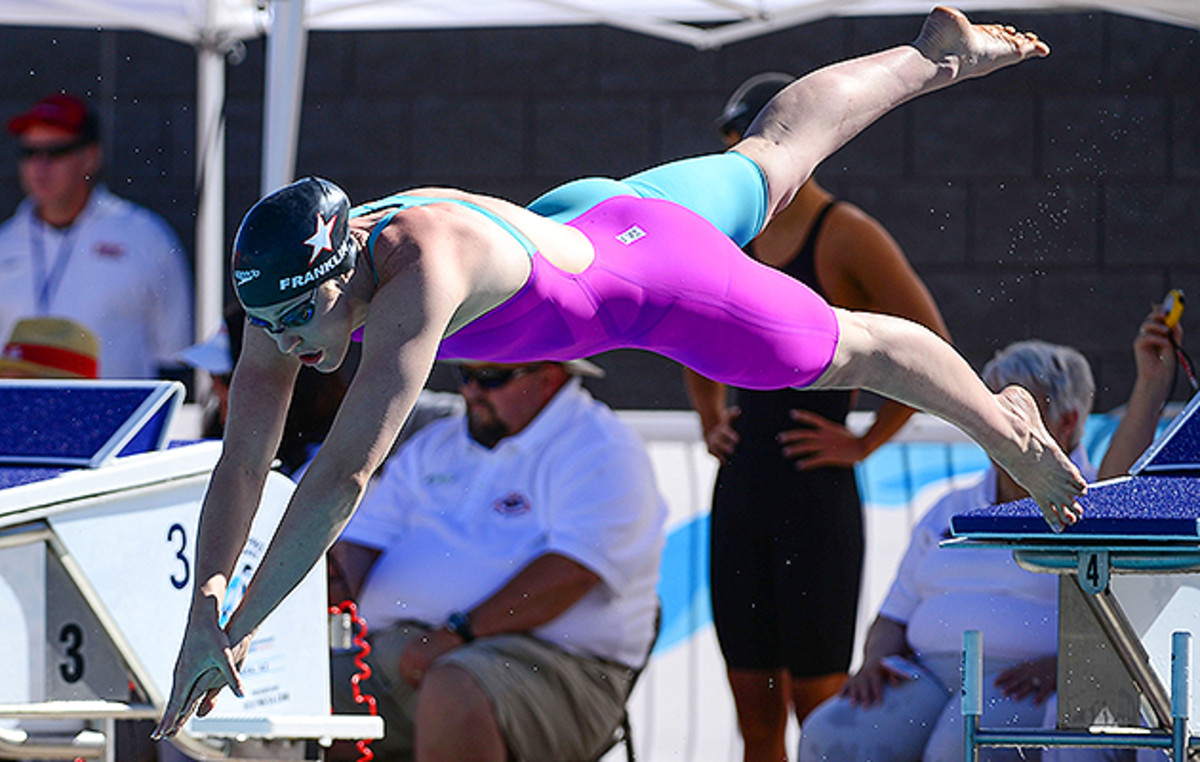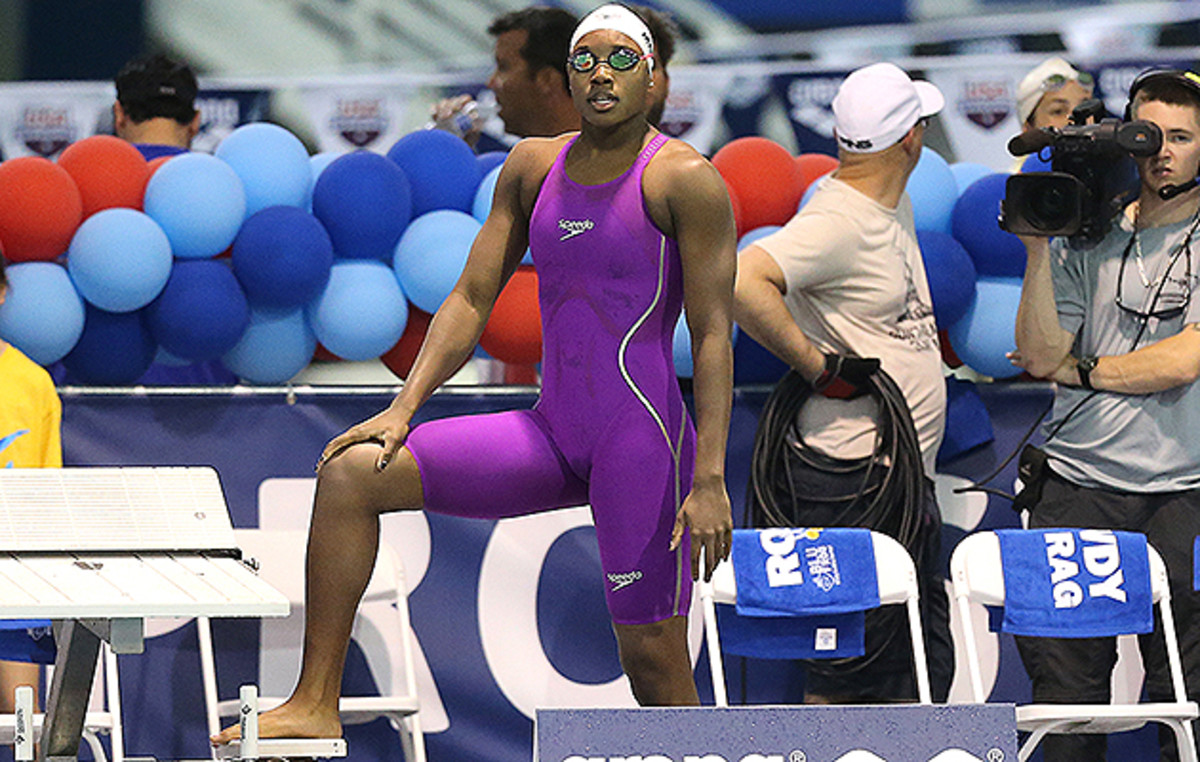From Phelps to Ledecky, stories to watch at Olympic swimming trials

Your teams. Your favorite writers. Wherever you want them. Personalize SI with our new App. Install on iOS or Android.
The U.S. Olympic Swim Trials begin this Sunday in Omaha. With two places up for grabs in each individual event and up to six places in the six relays, these trials are among the fiercest domestic meets of the four-year Olympic cycle in any sport. Here are some of themes and questions to watch in Omaha starting Sunday.
How many for Michael?
What do you give a man with 22 Olympic medals, with 18 of them gold?
A few more.
This year, Phelps has said that his Olympic program would not be as ambitious as in years past. For now, he has entered five events in Omaha (the 100- and 200-meter freestyles, the 100- and 200-meter butterfly races and the 200-meter individual medley). He knows he can still be competitive in a medley or butterfly race—he won those three events at U.S. nationals this year—but he entered the freestyle events knowing he needed to put up a respectable time in order to be in the mix for a relay swim. The bet here is that he scratches the 200-meter free, assuming everything else is going well.
• Michael Phelps enjoying the final laps of his indelible swimming career
Phelps is no longer the force he was on his path to Beijing in 2008—he set the most recent of his 39 world records back in 2009 (during the era of the now-banned full-body suits)—and much has changed as controversies and life-changing events have swirled around him out of the pool. But he says that he came back simply because he missed the pool.
Phelps, who’s now 30 years old and a new dad, will add to his medal haul and his legacy this year. The question is: how many?

Le dominant
Katie Ledecky was the youngest swimmer at the trials in 2012 and though she’s accomplished so much since then, it seems odd to call the 19-year old from D.C. a veteran. But after setting 11 world records and winning ten world and Olympic medals, all golds, before her 19th birthday, Ledecky has nearly all the bases—and distances—covered.
• How Katie Ledecky became the world’s most dominant swimmer
In Omaha, she’s entered in every freestyle event from 50- to 800-meter, plus the 400-meter IM. She would swim the 1500-meter for good measure as well, except that women don’t swim that distance at the Olympics. Although the tight schedule allows for Ledecky to try this preposterous program, convention says she’ll pass on the 50-meter and maybe the IM. She hasn’t swum many hundreds, but she says she wants to make herself available for relays and wants to confirm her place on those teams with strong showings in Omaha. Just which races will the world’s most dominant aquastar choose to swim and will she ever get tired? We’ll find out soon.
Jeah!
What would Ryan Lochte do? Appear on 30 Rock? Strut his stuff on Dancing with the Stars? Get parodied on Saturday Night Live? Trademark a signature word not even he seems to understand? Jeah. Life never seems stressful for the 31-year old, and as he takes his final kick to the Olympic can, it is easy to lose him in Phelps’s shadow. But with 11 Olympic medals and 27 World medals, that would be a shame.
In a down year, Lochte’s victory in the 200m IM produced the only individual gold medal for a U.S. man at the world championships in Kazan, Russia last year. He’s entered in six events in Omaha (100- and 200-meter free, 100-meter fly, 200-meter back, 200- and 400-meter IM), and while many thought the longer IM might be a logical place to drop, he confirmed at media day that he will, in fact, be swimming the event. He suffered a knee injury three years ago and it slowed him down, especially in the 400-meter IM. His best swim this season is seven and a half seconds slower than his best, and he hasn’t raced the event internationally since the London Games.

Hit or Missy
Before Katie Ledecky’s emergence, Missy Franklin was set to become the queen of the pool for a generation of swimmers. There is still nobody who seems to enjoy the sport more. Even after her Olympic success in London, where she won four gold medals and a bronze, Franklin dipped into the world of collegiate swimming at Cal rather than turn professional right away.
Since turning pro after two years with the Golden Bears, Franklin’s had some ups and downs after winning five gold medals at the Barcelona worlds in 2013. She didn’t win an individual world gold last year and hasn’t put up a best time in three years, but she should be among the favorites in the 200-meter back in Rio, assuming she swims as she can at the trials. Look for her in the freestyle and backstroke events in Omaha.
Remember DiRado
Ever hear of Maya DiRado? Maybe not, since the Stanford grad hasn’t yet swum on the Olympic stage. But the 23-year old is among the most versatile swimmers in the country and is the top seed in both individual medley races, events in which she placed fourth at the trials in 2012.
• Caeleb Dressel nearly quit swimming, but now he’s an Olympic favorite
Yet as durable as DiRado is, she has planned a daunting schedule with 200-meter races in the freestyle, butterfly and backstroke. If she keeps to that program, she’ll be a busy swimmer on Wednesday night with the 200-meter free finals, 200-meter fly semifinals and 200-meter IM finals scheduled within about an hour. She is also the second seed in the 200-meter backstroke, but that comes later in the week, with fewer conflicts. How well will people know DiRado’s name by summer’s end?

Simone wants some more
It isn’t as though Simone Manuel minds the label of the African-American swimming role model; she just reminds people from time to time that she’d like to win a few medals along the way.
“Like anyone else,” she says, “All the symbolism disappears when you get in the water.”
Manuel has been disappearing from view, herself. She set U.S. and NCAA records in the 100-yard freestyle as a Stanford Cardinal freshman and is well-positioned to make the team in the 50- and 100-meter frees in Omaha. A relay spot seems certain, but against a tightly bunched field anything near her PR, 53.25, would likely get her an individual place, too.
• Tyler Clary looks to repeat his gold-medal London performance in Rio
Can they rely on the relay?
U.S. men’s teams have historically dominated relay races on the world stage, especially the freestyle relays. But the squad has been in a slump lately. At the World Championships in Kazan, Russia last year, the U.S. men finished a dismal 11th and failed to make the final of the 4x100 freestyle relay. They did manage silver in the 4x200 relay, but only after sitting out Clay Youngquist, their least experienced swimmer, in both the prelims and finals.
They won’t be able to do that this year after FINA, the sport’s international governing body, passed a rule requiring all swimmers on the roster to compete in one race. If someone isn’t entered in an individual race and the team leaves him or her out of the relays, the team will be disqualified. That leaves team depth at a premium. Fortunately, Phelps is back in the mix and can be counted on for strong freestyle legs at both distances and probably a butterfly leg in the medley relay. And emerging sprinters Maxime Rooney and Michael Chadwick could crack the roster this year.
